
Fundy Stamp Collectors Club
P. O. Box 302
Moncton N.B.
E1C 8L4
Since 1997

 |
|
 |
The Fundy Stamp Club News
Published by Fundy Stamp Collectors Club
Issue No. 14, February 2006
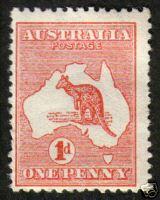 |
The Australian Commonwealth came into existence in 1901, at which time the Post Office was immediately organized on a Federal basis.
However, the first Commonwealth postage stamps were not issued until 1913. This long delay was partly due to inefficiency within the
Post Office and partly by political wrangling on which basic design to adopt.
During this period of time there was a large anti-Royalist sentiment within Australia. The Republicans, who were very vocal in
Federal politics were strongly opposed to the incorporation of the head of the British sovereign (first Edward VII and then George V)
on Australian stamps. The anti-Royalist group won the battle, and the first designs were of the "kangaroo in map" design. When the Federal government was defeated in 1913, one of the first acts of the Cook government was to order a series of stamps bearing the portrait of King George V, and in 1914 the first of three stamps appeared. The Post Office, however, then proceeded to keep BOTH basic designs in issue - the much criticized kangaroo design for 34 years, and the George V design for 23 years.
|
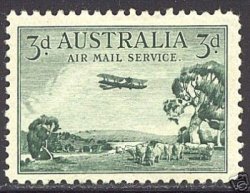 Scott # C1 1929 |
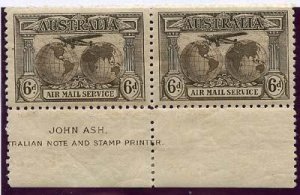 Scott # C3 1931 |
Following the Federation on January 1, 1901, all stamps of the then current colonial types continued on sale, and actually became Commonwealth stamps. These were combined with further Federal regional issues, or " states " issues in 1912. Some of these stamps continued to be used for a long time, to use up all back stocks. States stamps remained valid for postage until February 13, 1966.
The first airplane flight carrying mail in Australia was in July 1914, when the French aviator. Monsieur Guillaux flew from Melbourne to Sydney. The first officially designated airmail stamp is the 3d green of 1929. These were followed in 1931 by the 6d purple and 6d brown of the " Southern Cross " issue.
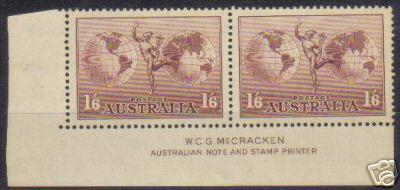 1934 Hermes " Greek God of Speed " 1929 |
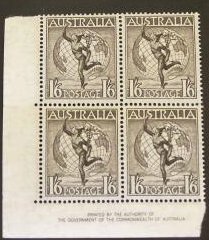 1948 Hermes issue |
There exist other issues that philatelists regard as airmails, but are not classed as such by the Post Office (although they were primarily issued to prepay airmail charges over certain routes).
 1957 Flying Doctor Issue |
 1958 Qantas Issue |
 1958 Southern Cross Anniversary |
These include the 1 / 6 Hermes issues of 1934 and 1948, the Flying Doctor issue of 1957, the 2 / Quantas commemorative of 1958, and the 8d Kingsford-Smith and Southern Cross 30th anniversary issue, also of 1958. It should be recognized that the description of these issues as airmail is a philatelic definition, not an official one. ***
Another long, cold winter is upon us, although it has been surprisingly mild in the Moncton area. This is a complete change from last year.
The New Year opened with a bang, at least in the philatelic community. New postal rates greeted all of us, likely to the dismay of most. Rate hikes seem to be a common thing most years, as Canada Post struggles to survive in a very competitive market. However, the real treat to the New Year is the prospect of new stamp programs and new issues. Although not all collectors do collect new issues, I am one who does, although for a select few countries. It is always interesting at this time of year to obtain the new stamp programs for the countries one collects, to learn of their plans for the issues for the next twelve months. I believe one learns as much from this aspect of collecting about the history, culture, and people of a nation as from any other period of collecting.
Meetings of the Fundy Stamp Collectors Club have remained quite high in attendance, now averaging about 15 members. Despite the doom and gloom talk of the demise of the hobby, our club has again experienced a membership growth.
The clubs annual show and sale - BRUNPEX 2005 - was again very successful. There were 12 dealers, and about 65 collectors graced the show with their attendance. The club made a small profit from the show, and combined with the increase in membership, is showing a healthy bank balance.
Because of this the membership decided to purchase a complete set of Scotts 2006 catalogues, for use by the members.
The club would like to welcome its new slate of officers for 2006: President Art Gillard, VP Rod Allison, and Secretary-Treasurer Mike Leighton. Dave Tait will serve as Past President, and five directors were selected: Francine Lemaire, Ralph Richardson, Bob Evans, Mike Steeves, and Don Mills.
Presentations at club meetings included Canadian varieties (November), the History of Christmas Seals (December), and a second session on Canadian varieties (January). The March meeting will see a presentation on the "Tiger Moth" airplane.
The club has started a series of circuit books, in which members can offer up duplicate stamps for sale and purchase. The club is also working hard to get a website up and running. More news will follow as it progresses
Look for future issues of The Fundy Stamp News in May and October 2006.***
Don Mills, editor
e-mail: donmillscanada@yahoo.com
If you were going to Washington, DC, to tour the city, you would need a guidebook. Without one, you might wander aimlessly throughout the city, from one unidentified building to another, possibly missing the Capitol or the White House or the Washington Monument. You would probably be unaware of the many other attractions available.
Your guidebook for philately is the stamp catalog. Without it, your trip would be less informative and less enjoyable. The catalog is your illustrated map, directing you to many stamp attractions and depicting where you are, what you have accomplished, and where you want to be heading. Since 1867, when John Walter Scott published the modern catalog (a stamp list with prices), a number has been assigned to every stamp issued by every country of the world. Scott publishes U.S. Specialized catalogs and their numbers are used in most other catalogs and price lists in the United States.
Scott publishes six volumes of catalogs covering the entire world in addition to its U.S. Specialized Catalog. But, how do we locate that information for a specific stamp? First, of course, we must identify the country. Having done that, we should determine the year, or at least the general time period, when the stamp was issued. For U.S. issues, featuring a person, we can easily determine the time period; armed with the date of death for that person and the knowledge that no U.S. stamp has ever honored a living person. The denomination also can be helpful, since postage rates are generally grouped in a certain sequence. We can quickly thumb through the catalog searching for a grouping of stamps with the same denomination, and begin there.
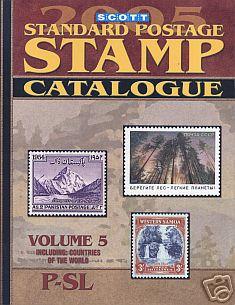 Scott Catalogue |
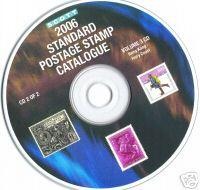 Scott Catalogue on CD |
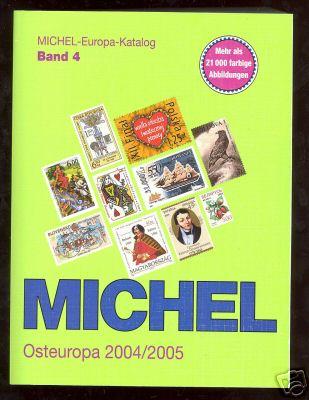 Michel Catalogue |
Finally, scan the stamp reproductions in the catalog for one that matches the stamp we are trying to identify. Be certain to compare
all elements -- denomination, color, perforations, and variations -- to be sure you have found the correct listing.
The catalog prices that are listed, even in a current publication, should be considered as only a rough guide. They represent what you
might approximately pay for a stamp, and the price for which you could sell it. The condition of any stamp has a great influence on
its price relative to the catalog listing. Catalog prices for mint stamps are for those in "fine" condition and only lightly hinged.
A stamp considered "superb" might sell for several times the catalog value. And naturally, stamps in less than fine condition will
sell for a small percentage of the listed price.
The best way to become familiar with stamp catalogs is through use. Try using a catalog from your local library. Read the beginning
of the catalog and you will find that it is filled with information about the catalog format and about stamp
collecting. Then take the catalog and some stamps from your collection and attempt to locate the listing for each.
Remember that catalogs are much more than just price lists. They are guidebooks containing information about stamp attractions
to make your continuing tour of philately more enjoyable.
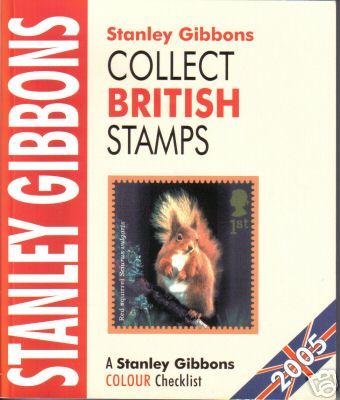 Stanley Gibbons catalogue |
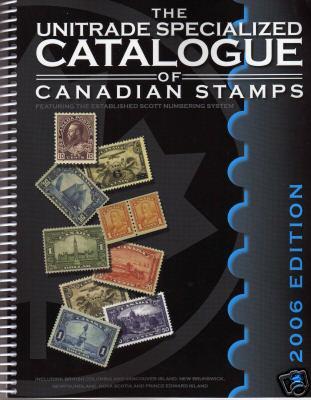 Unitrade catalogue |
I recommend “The Postal Service Guide to U.S. Stamps” to beginners in U.S. It’s packed with information for stamp collecting; colored
illustrations for all U.S. stamps, post cards, and stamped envelopes; price guide for U.S. stamps, FDCs, plate number block,
stamped envelopes, post cards, and the philately products that USPS offers. It only cost $17.95 for 2001 issue and 14.95
(I think) for 1997-2000 issue, those I know of
Getting Started with Stamp Collecting for pre-teens
A hobby is something you like to do on a rainy day, when you can't go outside with your friends to play. Saving stuff as a hobby is lots of fun, especially if the stuff is pretty and interesting. Kids can save or collect lots of things, like sports cards, coins, dolls, action figures, rock group posters, and postage stamps.
Stamps that you can buy at the Post Office and that are used on letters and parcels are both pretty and interesting. And they can be lots cheaper than saving some things, like cars!
Until next time Happy Surfing.***